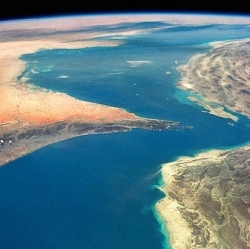
Scientists are studying past changes in sea level in order to make accurate future predictions of this consequence of climate change, and they’re looking down to Earth’s core to do so.
"In order to fully understand the sea-level change that has occurred in the past century, we need to understand the dynamics of the flow in Earth’s core" says Mathieu Dumberry, a professor in physics at the University of Alberta.
The connection is through the change in the speed of Earth’s rotation. Melt water from glaciers not only causes sea-level rise, but also shifts mass from the pole to the equator, which slows down the rotation.
Over the past 3000 years, the core of the Earth has been speeding up a little, and the mantle-crust on which we stand is slowing down. As a consequence of Earth rotating more slowly, the length of our days is slowly increasing. In fact, a century from now, the length of a day will increase by 1.7 milliseconds. This may not seem like much, but Dumberry notes that this is a cumulative effect that adds up over time.
Based on their work reconciling these discrepancies, the scientists involved in the study are confident in predicting sea level to the end of the 21st century. "This can help to better prepare coastal towns, for example, to cope with climate change," says Dumberry. "We’re talking billions of dollars of infrastructure here." Dumberry notes that this study serves as a stimulus for more work to continue investigating the deep interior of our planet.
